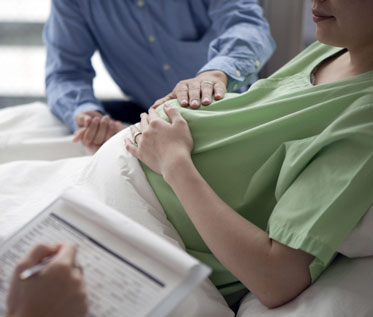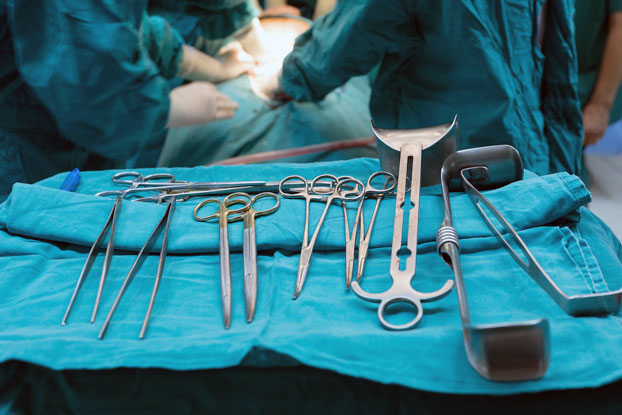A cesarean section (also referred to as a c-section or C/S) is a surgical procedure designed to deliver babies when it is not possible or safe for the birth to take place vaginally (sometimes called “natural birth”). In the United States 32 percent of all babies are delivered via cesarean. C-sections are often planned in advance, but occasionally complications during delivery require an unexpected cesarean section.
When and Why is a Cesarean Section Necessary?
 In many cases, it is possible to plan for a cesarean section prior to labor and delivery. C-sections are often required if the baby is in a breech position (feet or bottom down), is too large, or is a multiple birth (twins or more). Cesarean sections may also be scheduled in advance if the mother has a history of previous c-sections or presents with other medical or obstetric complications.
In many cases, it is possible to plan for a cesarean section prior to labor and delivery. C-sections are often required if the baby is in a breech position (feet or bottom down), is too large, or is a multiple birth (twins or more). Cesarean sections may also be scheduled in advance if the mother has a history of previous c-sections or presents with other medical or obstetric complications.
Occasionally, an issue may develop during labor that necessitates an unexpected cesarean section. For instance, if the labor does not progress properly or the baby’s head does not descend, a vaginal delivery might not be possible. A physician may also decide that a c-section is needed in order to avoid a risk to the mother or if the baby is in distress.
How a C-Section Works
A cesarean section is a significant surgical operation but it is a fairly straightforward procedure. In preparation for a c-section, the woman receives spinal anesthesia. Once the pain medication takes effect, doctors make two surgical incisions, one in the abdomen and a second in the uterus. The incision will most likely be made horizontally across the lowest and thinnest part of the uterus. This is known as a “low transverse incision” or, more commonly, a “bikini cut.” Doctors prefer it because it heals quickly and is less likely to split if the woman wants to try for a vaginal delivery in a subsequent birth. A vertical incision may be necessary if there is a medical reason for it.
The doctor will remove the baby through the uterine incision and parents can hold and bond with their child immediately after a cesarean birth if both the mother and baby are healthy and do not require further medical attention. After the delivery, doctors sew up the incisions using a combination of dissolvable stitches, surgical glue, and/or staples that will need to be removed several days later.

Healing & Recovery from a C-Section
It takes approximately six weeks postpartum to recover from a cesarean section. During this time it is vital to rest and allow the body to heal. Doctors caution that for the first two weeks after a cesarean section women should lift nothing heavier than a gallon of milk and refrain from driving a car. Recovery from a c-section is more involved than a vaginal birth, so women who are recovering from cesarean section will need extra help with mobility and infant care, especially in the initial days after delivery.
During the healing process, the c-section incision must be closely monitored to ensure an infection does not develop. The scar should be kept clean, but do not scrub it; simply rinse the incision daily with warm, soapy water and allow to air dry. It may be appropriate to apply a topical antibiotic to the scar, but consult your doctor to determine if this is necessary.
In general, the incision will become less painful as it heals. However, contact your physician immediately if the incision splits open or becomes infected.
Symptoms of infection that require medical attention are:
- A fever of 100.4º Fahrenheit
- Discharge from the incision
- A foul smell
- Redness, swelling, irritation, hardness or increasing pain and tenderness at the site of the incision
C-Sections are Safe and Effective, But Preferably Not Elective
A cesarean section is a common procedure with high rates of success, but it remains a major surgery that brings its own risks, potential complications, and extended recovery time. For these reasons and others, the World Health Organization and the American College of Obstetricians and Gynecologists advise pregnant women to avoid elective cesarean sections for the sake of efficiency or personal preference. It is best if women have c-sections only when it has been determined that there is a medical need for it.
If you have any questions about caesarean sections and ensuring a safe delivery for you and your baby, please contact Kansas City ObGyn today at This email address is being protected from spambots. You need JavaScript enabled to view it. or 913-948-9636.






